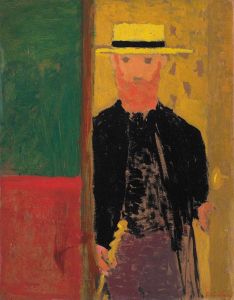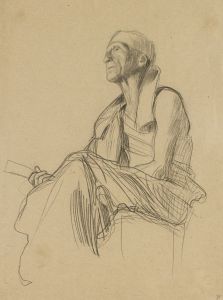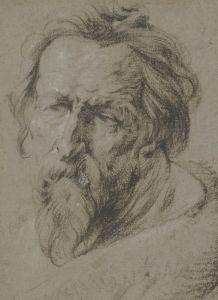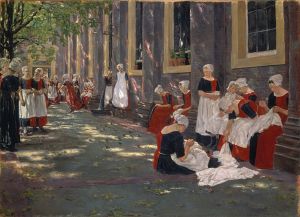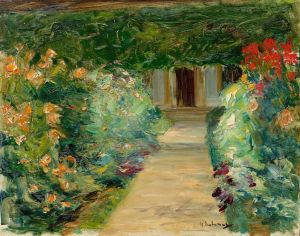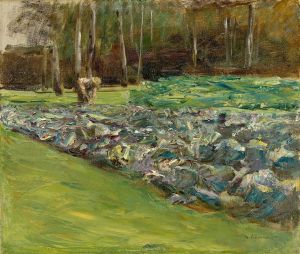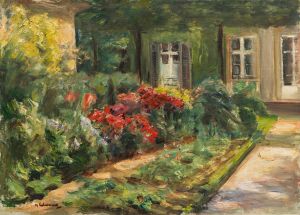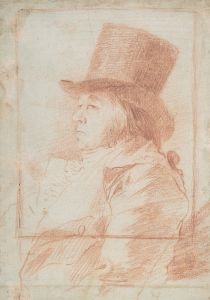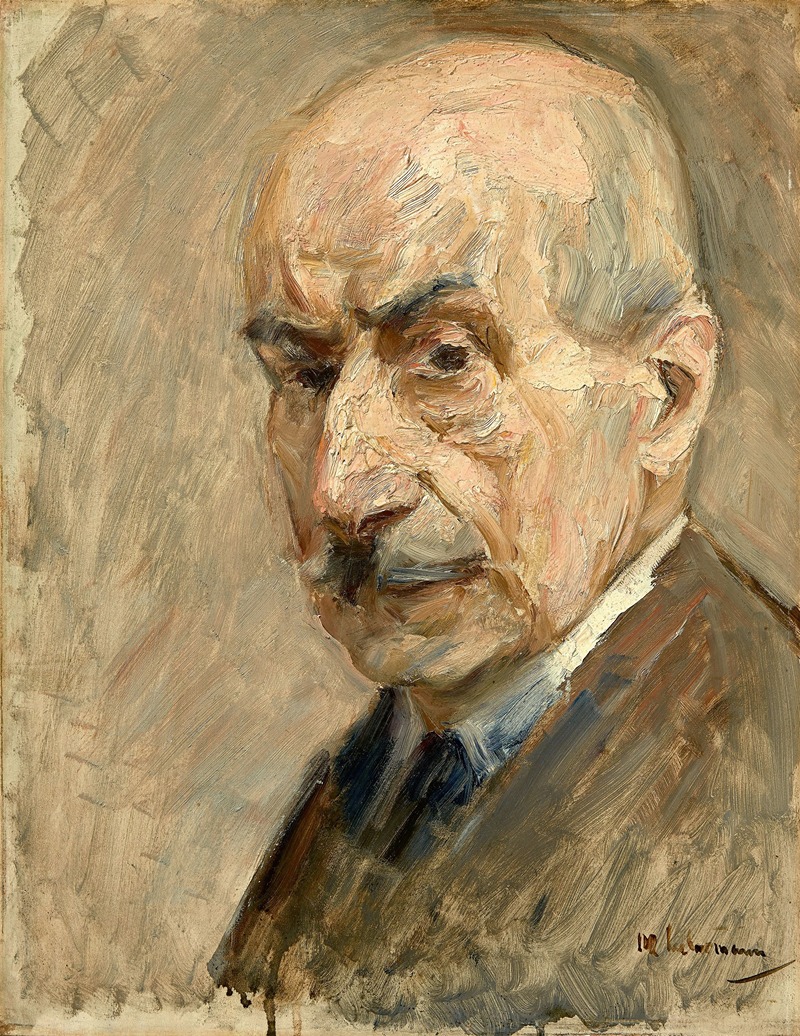
Selbstbildnis, Büste im Dreiviertelprofil nach links
A hand-painted replica of Max Liebermann’s masterpiece Selbstbildnis, Büste im Dreiviertelprofil nach links, meticulously crafted by professional artists to capture the true essence of the original. Each piece is created with museum-quality canvas and rare mineral pigments, carefully painted by experienced artists with delicate brushstrokes and rich, layered colors to perfectly recreate the texture of the original artwork. Unlike machine-printed reproductions, this hand-painted version brings the painting to life, infused with the artist’s emotions and skill in every stroke. Whether for personal collection or home decoration, it instantly elevates the artistic atmosphere of any space.
Max Liebermann's Selbstbildnis, Büste im Dreiviertelprofil nach links (Self-Portrait, Bust in Three-Quarter Profile Facing Left) is a self-portrait by the renowned German painter Max Liebermann (1847–1935). This artwork is one of many self-portraits created by Liebermann throughout his prolific career, reflecting his interest in self-examination and his evolving artistic style. Painted in oil on canvas, the work captures Liebermann in a three-quarter profile, gazing to the left, with a focus on his facial features and expression.
Max Liebermann was a leading figure in the German Impressionist movement and a central member of the Berlin Secession, an art group that sought to promote modern art in Germany. His self-portraits often served as a medium for introspection and artistic exploration, showcasing his technical skill and his ability to convey personality and mood through subtle details. In Selbstbildnis, Büste im Dreiviertelprofil nach links, Liebermann employs a restrained color palette and loose brushwork, hallmarks of his mature style, to create a lifelike yet introspective depiction of himself.
The exact date of this painting is not definitively documented, but it is believed to have been created during the later years of Liebermann's life, a period when he frequently revisited the self-portrait genre. During this time, Liebermann faced significant personal and political challenges, including the rise of National Socialism in Germany, which marginalized Jewish artists like himself. Despite these difficulties, Liebermann continued to produce art that reflected his dedication to his craft and his deep engagement with the human condition.
The painting is notable for its simplicity and focus on the subject's face, with minimal background distractions. This compositional choice directs the viewer's attention to Liebermann's expression, which conveys a sense of introspection and quiet dignity. The three-quarter profile view allows for a dynamic representation of the artist's features, emphasizing the contours of his face and the intensity of his gaze.
As with many of Liebermann's works, Selbstbildnis, Büste im Dreiviertelprofil nach links demonstrates his mastery of light and texture. The interplay of light and shadow on the artist's face adds depth and realism, while the textured brushstrokes give the painting a sense of immediacy and vitality. This self-portrait not only serves as a representation of Liebermann's physical appearance but also offers insight into his character and artistic philosophy.
The current location of the painting is not widely documented, and it is unclear whether it is held in a public collection, a private collection, or has been lost to history. Liebermann's works, including his self-portraits, are highly regarded and can be found in major museums and galleries around the world, particularly in Germany.
Selbstbildnis, Büste im Dreiviertelprofil nach links stands as a testament to Max Liebermann's enduring legacy as one of Germany's most important artists. Through this self-portrait, he invites viewers to engage with his art on a personal level, offering a glimpse into the mind and spirit of a master painter.





